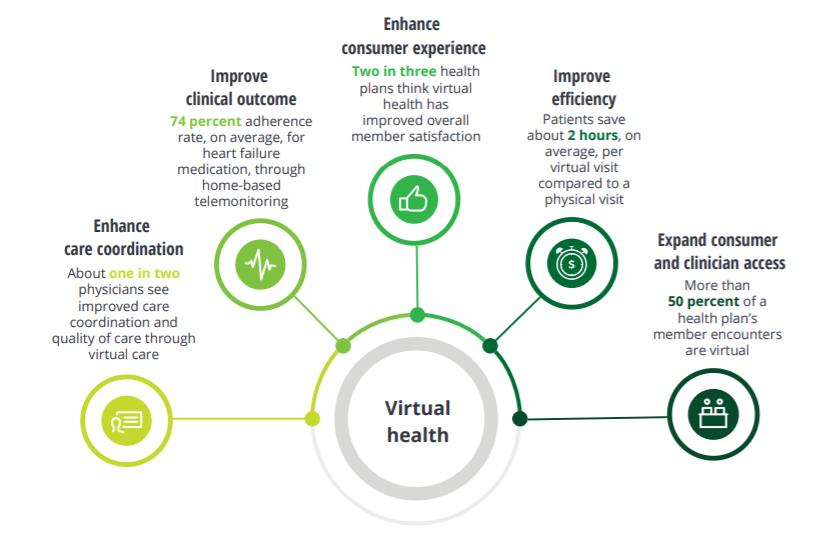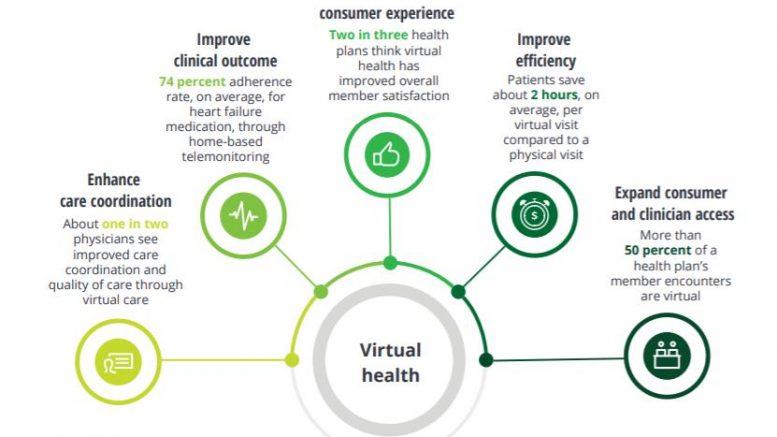Virtual care methods have become more and more essential to care delivery and healthcare transformation as a result of the COVID-19 pandemic. Telemedicine emerged as an effective tool for preventing infected patients and people with other health issues from congregating and potentially spreading the virus, and virtual interventions overcame barriers to accessing health services caused by geography, transportation, and fragmented care due to overburdened health systems.
Digital transformation has helped healthcare organizations build a better-equipped system to handle public health emergencies and coordinate care with a more holistic view of each patient’s health.
Telemedicine’s rapid growth during the COVID-19 pandemic has also permanently changed care delivery. Healthcare as an information-intensive sector needs a platform to store and integrate information across robust networks. To provide the missing link in healthcare technology, we need a health cloud that unlocks the power of the data and provides a platform on which new digital services and solutions can be built with native interoperability.
A new digital reality
In the new digital health environment, providers must encourage care models that hold clinicians and patients accountable in care journeys and outcomes. Population data organized via an analytics-powered virtual care platform can deliver a comprehensive view of demographics to help healthcare organizations streamline their work and prepare for a surge of incoming patients.
Telemedicine should support—not replace—traditional care delivery. High-quality care is founded on strong relationships. Providers can continue to care for their patients in person, but it’s important that remote monitoring remains an option for follow-up visits, check-ups, and the delivery of test results or educational materials.
With telemedicine’s rapid scale-up in the public health response to the pandemic, we have reached a tipping point, where the patients are unlikely to revert to the previous reality once society recovers from today’s outbreak.
The COVID-19 pandemic has changed patient expectations from the virtual care model, raising demands for more coordinated, convenient, and customized care solutions. To offer a personalized care experience, we need a cloud platform to connect the entire healthcare ecosystem across every function, giving a holistic and unified view of every patient.
Value drivers of digital transformation in healthcare
Digital transformation has become essential to staying relevant for every industry—especially since the pandemic.
Healthcare has adopted several technologies such as AI, cloud computing, data analytics, and IoT to enhance operational efficiency, increase patient satisfaction, and improve health outcomes. Using telehealth and telemedicine technologies to address current care needs will help providers and health systems build long-term, connected care strategies. According to a Deloitte survey, virtual health can drive value across five key areas:

Image | Deloitte
As healthcare is digitalized, caregivers can move beyond treating illnesses to facilitating proactive care. They will be able to identify diseases earlier, intervene, and ensure that patients have an active role in their health and well-being.
When drafting a virtual care strategy, an organization must identify its overarching goals and objectives befitting its role in the evolving ecosystem. Understanding patient populations helps organizations choose the right technology to invest in and the metrics to track to increase ROI.
While patient-centric models of care are common, providers’ experience—the ones who deliver care—must also be considered in the virtual landscape. A new lens should be applied to patient-provider relationships because the virtual healthcare environment changes rapidly. Therefore, collaboration is the future of virtual care. To effectively address the drivers of healthcare transformation, health plans and health networks need to work with community providers, technology companies, employers, payers, retail pharmacists, and others to serve patients.
The road ahead
With telehealth transforming healthcare and shaping the future of care delivery as a new channel to quality care while saving money, a wide spectrum of virtual care offerings unleashes the enormous potential of remote care, and telemedicine continues to benefit patients and providers in a multitude of ways.
There will always be challenges in healthcare. However, evolving technology will continue to help caregivers overcome those challenges!
Article by Dr. Paul Grundy Chief Transformation Officer, Innovaccer and Kevin Brennan





